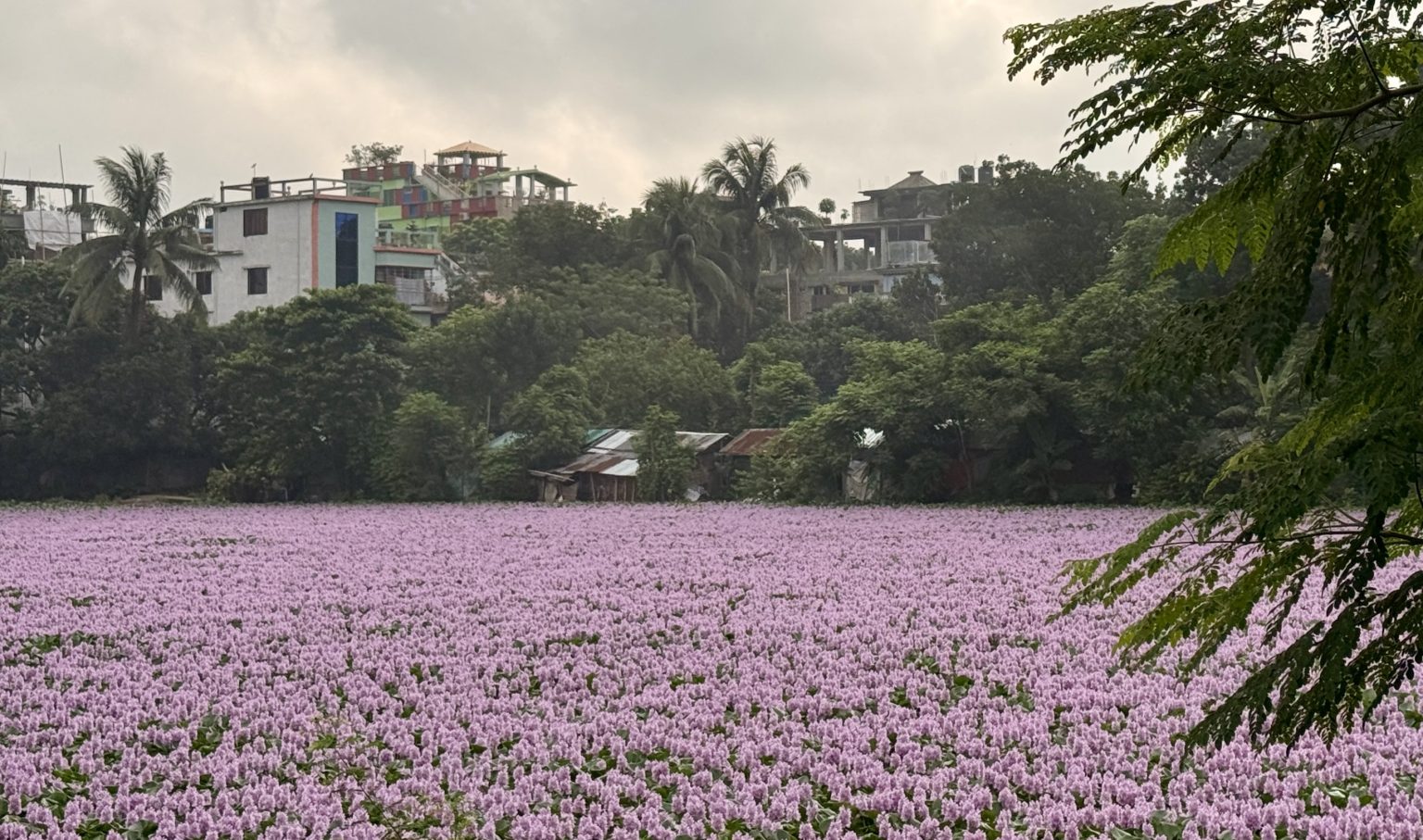What was once an ordinary pond in the New Market area of Jashore town has quietly transformed into something extraordinary — not just a waterbody, but a living classroom. This scenic site is fast becoming a new urban attraction, especially for nature lovers and photographers, offering a moment of pause, reflection, and appreciation for the beauty that surrounds us.
The pond’s surface, now blanketed with blooming water hyacinths, resembles a vast pink-and-purple carpet. Above the dense green leaves, thousands upon thousands of floral stalks rise proudly, as if part of a carefully curated botanical garden. Against the backdrop of grey skies, green foliage, and glimpses of distant buildings, the entire scene creates a stunning natural tableau.
Each blossom carries six delicate petals, enhancing the aesthetic appeal of this unlikely floral haven. From afar, the sight is breathtaking — an organic artwork composed by nature itself.
In Bangladesh, water hyacinths are typically seen as a nuisance — invasive plants that choke waterbodies, reduce oxygen levels, hinder boat navigation, and disrupt fish farming. Yet in recent years, researchers and communities alike have begun exploring new uses for this once-maligned plant.
Water hyacinths are now being utilised as organic fertiliser, cattle feed, and even as raw material for handicrafts. Some innovative farmers have begun developing floating vegetable gardens using the plant — a creative solution for flood-prone regions.
In short, what was once considered a curse is now being reimagined as a blessing.


